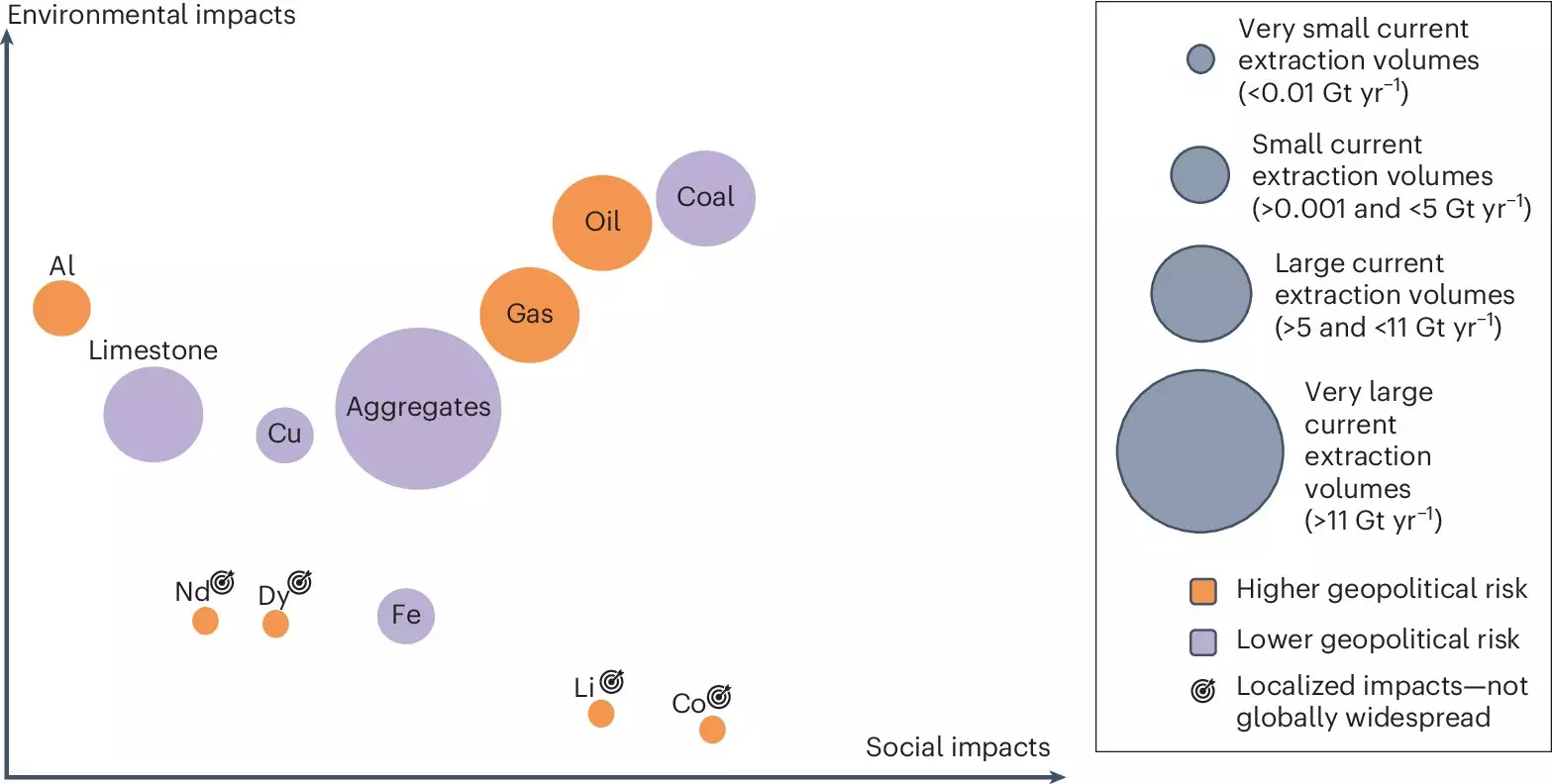The increasing global demand for cobalt and lithium for e-car batteries, as well as other materials such as copper, aluminum, iron, and rare earth elements for renewable energy technologies, poses significant challenges for the future. The transition to a fossil-free power supply is essential for combating climate change, but it also comes with its own set of environmental and social impacts. A recent study led by the Berlin-based climate research institute MCC sheds light on the foreseeable increases in material consumption associated with the climate transition and explores potential strategies to mitigate these challenges.
While decarbonization will make the global economy less resource-intensive by phasing out coal, oil, and gas, the additional material requirements for renewable energy technologies and infrastructure present ecological and social risks at the regional and local levels. The extraction of raw materials, such as cobalt and aluminum, can lead to land degradation, threats to biodiversity, water scarcity, and health hazards. Furthermore, the production of these materials is often linked to issues such as political instability, corruption, and geopolitical dependencies. For example, a significant portion of the world’s cobalt deposits are located in conflict-ridden countries like Congo, while China dominates the production of semiconductor wafers for solar cells.
The study emphasizes the importance of implementing demand-side climate solutions to reduce material consumption during the climate transition. These solutions include behavioral changes in mobility, housing, and nutrition, as well as improving material circularity in the economy. By promoting more sustainable practices, such as pooled mobility in the transport sector, the use of natural construction materials in buildings, and a reduction in meat consumption in the food sector, it is possible to lessen the environmental impact of the transition to renewable energy.
Quantifying and categorizing the potential savings in materials resulting from demand-side climate protection is crucial for informing decision-making by governments and policymakers. Integrated Assessment Models that underpin climate policy development need to be updated to include the material dimension of a low-carbon and ultimately carbon-free global economy. Investments in infrastructure that support climate-friendly behaviors, along with positive incentives for individuals and businesses, are essential for achieving a more sustainable future.
As the world races towards a carbon-free economy, the demand for materials such as cobalt, lithium, copper, and aluminum will continue to rise. It is crucial to address the environmental and social impacts associated with the extraction and production of these materials by implementing demand-side climate solutions. By promoting sustainable practices and reducing material consumption, we can make the transition to renewable energy more environmentally friendly and socially responsible. Interdisciplinary research and collaboration are key to achieving a low-carbon global economy that is sustainable for future generations.


Leave a Reply